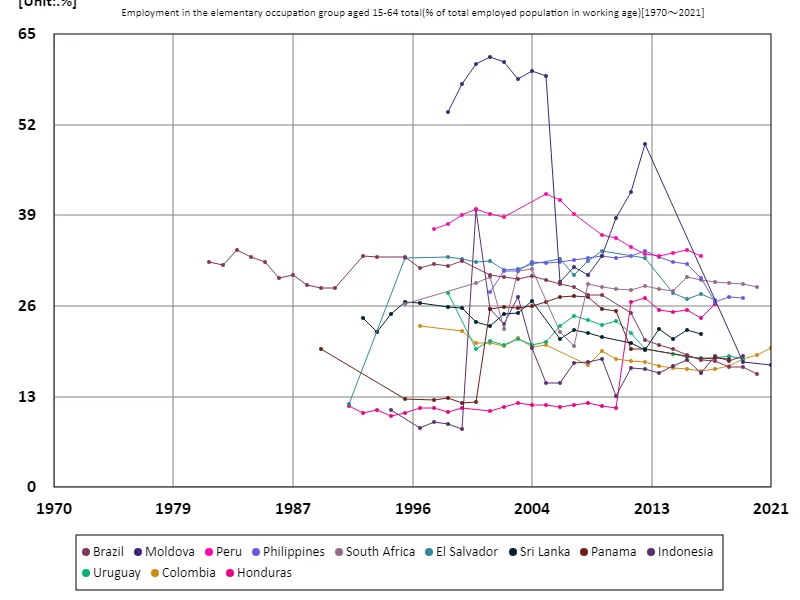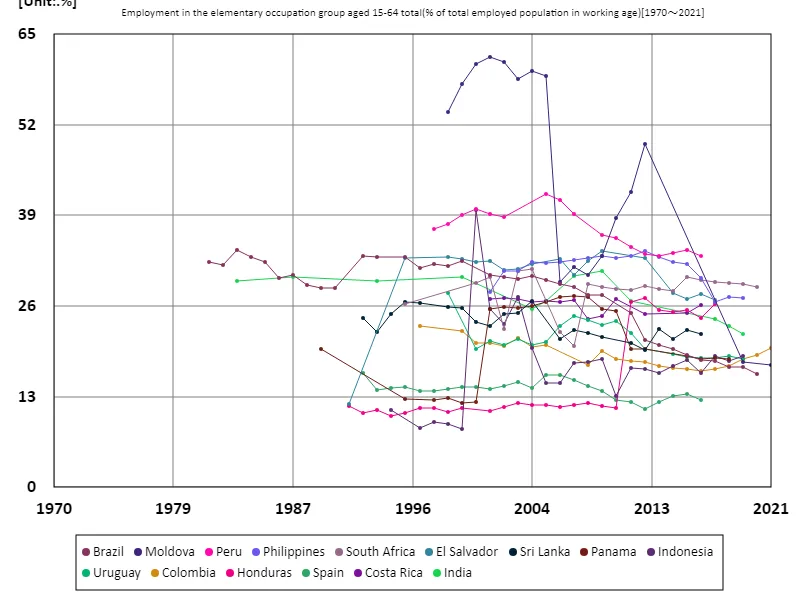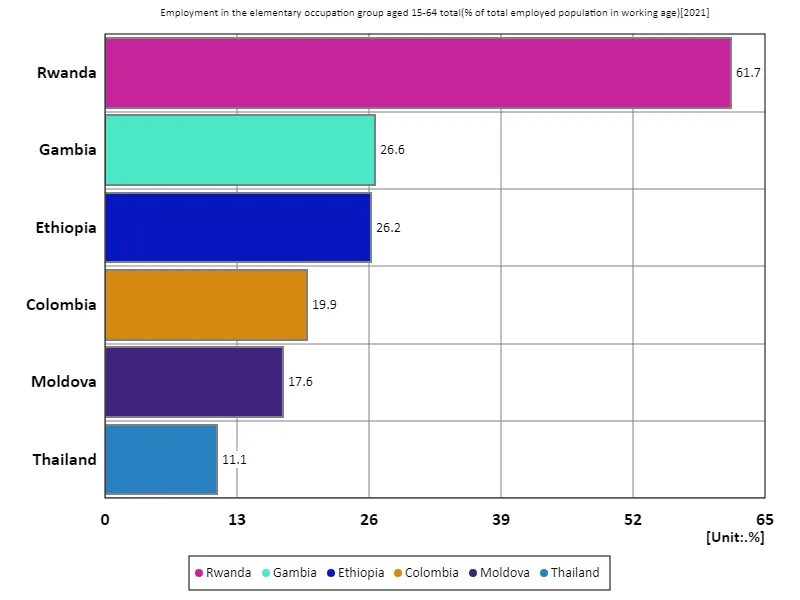- Abstract
- Employment rate for all 15-64 year olds, primary occupational sector (percentage of working age employed)
- Employment rate for all 15-64 year olds, primary occupational sector (percentage of working-age employed population) (Worldwide)
- Employment rate for all 15-64 year olds, primary occupational sector (ratio of working-age population) (worldwide, latest year)
- Reference
Abstract
The high employment rate in Colombia’s primary vocational sector, at 19.9% in 2021, is due to the fact that primary occupations such as agriculture and handicrafts make up an important part of the economy. Over the past few decades, Colombia’s industrial structure has changed as the economy has grown, but many workers remain in primary occupations. This trend reflects the continued reliance on foundational occupations, despite advances in technological innovation and the spread of education. Due to changes in the labor market, the high proportion of primary occupations compared to other countries reflects the characteristics of Colombia’s economy, and future challenges will include improving the quality of employment and developing workers’ skills.
Employment rate for all 15-64 year olds, primary occupational sector (percentage of working age employed)
Moldova’s primary vocational sector employment rate was high at 61.7% in 2001, due to the economic structure at the time being mainly dependent on agriculture and traditional handicrafts. However, with the advent of the 21st century and changes in the economy, this proportion has declined significantly. In 2021, it fell to 28.5%, indicating that Moldova’s economy is becoming more diversified and its industrial structure is changing. In particular, increasing urbanization and technological advances are shifting the labour market away from a reliance on primary occupations towards secondary occupations such as services and manufacturing. This trend is consistent with the changes in occupational structure that accompany economic development in many countries. Moldova’s transformation reflects economic growth and a transforming labor market, with further progress expected in the future.


The maximum is 61.7%[2001] of Moldova, and the current value is about 28.5%
Employment rate for all 15-64 year olds, primary occupational sector (percentage of working-age employed population) (Worldwide)
Employment rates in the primary vocational sector in Moldova were very high at 61.7% in 2001, but have since fallen sharply to 28.5% in 2021. This shift reflects a significant transformation of Moldova’s economic structure. In the early 2000s, primary occupations such as agriculture and traditional crafts were the main sources of employment in Moldova, but economic diversification and industrial development led to an increase in higher value-added occupations. This decline in employment is a result of increased urbanization and industrial modernization. In particular, technological change and the growth of the service sector have reduced the importance of primary occupations in the labour market. In addition, the rise in educational levels among young people has also promoted a shift to more advanced occupations. As a result, Moldova’s economy is shifting from being dominated by agriculture to a focus on services and manufacturing, and the structure of its labor market is changing. These changes reflect the evolving skill sets required as the economy grows, a trend that is likely to continue in the future.


The maximum is 61.7%[2001] of Moldova, and the current value is about 28.5%
Employment rate for all 15-64 year olds, primary occupational sector (ratio of working-age population) (worldwide, latest year)
According to 2021 data, Rwanda’s primary vocational sector employment rate for all 15-64 year olds is 61.7%, the highest in the world. This indicates that Rwanda’s economy is mainly based on agriculture and primary occupations are a major source of employment. However, compared to the global average of 27.2%, Rwanda’s high reliance on primary vocational education stands out. The overall total of 163% is due to overlaps in primary occupational sectors in some countries and workers with multiple roles. The data show that employment rates in the primary occupational sector vary widely across countries. In developing countries, agriculture and traditional occupations remain important sources of employment, while developed countries are shifting towards services and manufacturing. In countries like Rwanda, where the primary vocational sector accounts for a high proportion of the workforce, future challenges include modernizing the economy and expanding education. This trend reflects the differences in each country’s stage of economic development and industrial structure, and calls for changes to accompany the evolution of the labor market.


The maximum is 61.7% of Rwanda, the average is 27.2%, and the total is 163%



Comments